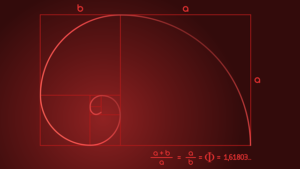
Built by Traders, for Traders
Traders Agency > Fibonacci
I share my top trade setups whenever I have a big, new idea for the market. And to invite a global audience, I provide the core chart and discussion on my TradingView page. As regular readers know, I’ve been watching the crude oil (CL) futures market over the past few days and weeks. It has been …
The post This Week’s Idea: CL Daily Long Idea appeared first on….
I share my top trade setups whenever I have a big, new idea for the market. And to invite a global audience, I provide the core chart and discussion on my TradingView page. This week, I’ve been watching the Nasdaq 100 (NQ) futures market, which has had a strong bullish push lately. However, now that some …
The post This Week’s Idea: NQ Hitting Daily Downtrend Line appeared first….
Markets are up for the third day in a row and showing another big rally this afternoon. The tech-heavy Nasdaq 100 (NQ) futures market is up 1.8% today alone and up almost 12% from the recent low. Investors are looking ahead to important earnings reports from mega-cap technology companies like Microsoft (MSFT), Meta Platforms (META), …
The post Is a Nasdaq 100 U-Turn Ahead? appeared first on
Digital currency futures rallied this past Friday, following the gains in the major US stocks indexes. But while the stock and futures markets shut down for the weekend, the traditional digital currency markets kept gaining. BTC gained fractionally on Saturday and then rallied another 2.9% on Sunday. That led to a higher open for BTC …
The post BTC Bounces, But This Bear Market Isn’t Over appeared first….
I share my top trade setups whenever I have a big, new idea for the market. And to invite a global audience, I provide the core chart and discussion on my TradingView page. The crude oil (CL) futures market has pulled back from its recent highs, but it has found some potential support at its longer …
The post This Week’s Idea: Looking for Longs in Crude Oil appeared….
The Fibonacci numbers are often a topic of discussion in various philosophies. According to the studies, these numbers appear as patterns throughout nature. You’ll see them in leaves, shapes, and other structures. They are numbers that connect to the golden ratio. When you use ratios, you can make something look aesthetically proportional.

In the early 1200s, Italian mathematician Leonardo Fibonacci introduced the Fibonacci sequence. At the time, he became known as Leonardo Pisano (of Pisa), though Fibonacci was his last name. It meant the son of Bonacci.
The sequence starts with a one or a zero. According to him, each succeeding number is the sum of the preceding two numbers. So we have 0, 1, 1, 2, 3, 5, 8, 13, etc. In the original illustration, Leonardo used the example of breeding rabbits. He posited that beginning with a single pair, each new pair improves their breeding productivity.
More interest developed when scientists discovered that these numbers occur in natural phenomena. They first became apparent in the patterns of plants and trees. They then found connections to many aspects of human civilization. Today, the Fibonacci ratio is a base guideline for websites, buildings, markets, and more.
Historians also found that Indian mathematicians came up with something similar. One could see it in the work of Pingala dating back to 200 BC. They also appear often in various mathematical equations. They appear unintentionally and occur through most of creation and invention.
As mentioned earlier, the Fibonacci has many applications and occurrences. Mathematicians believe it to be the first instance of recurrence relation discovered. You can see Fibonacci in action in:
There have been signs of Fibonacci used in early mathematical systems, but Pisano was the one who began spreading the word. He popularized the number system we use today, replacing the Roman numeral system. His sequence seemed inconsequential at the time. Then, more and more people discovered the usefulness of it.
One application of Fibonacci is creating a numerical estimate for the task difficulty. It helps create a more efficient system where you assign a numerical value to the work at hand. That way, work can spread out between team members better. Individual workers can also use Fibonacci to prioritize their tasks and organize them better.
Due to the inherent ratio in Fibonacci numbers, one could argue that you can use them to make better proportions in many industries. The gaming industry could, for example, have a better scale of balance with the use of Fibonacci. However, there are always two sides to a coin.
Fibonacci never gets as much testing as it deserves outside of Math. This is because the person’s interests must align. There’s also the question of whether they want to use sequences in the first place. Another point is that Fibonacci occurs so naturally that people aren’t even aware that they are using it.
The precision of the Fibonacci is uncanny. It shows that there are specific ratios that occur in natural phenomena. You can see it in the body structure or the ripples of water in a pond. Some scientists speculate that these patterns appear in obsessive behavior and genius behavior. However, the significance of knowing these things has lacked in-depth exploration.
Astronomy is one of the sciences in which the Fibonacci sequences appear many times. It shows how the orbits of the planets match each other within a set sequence of the Fibonacci. For example, dividing the number of days in a tropical year by one of the Fibonacci ratio numbers shows the orbit of Venus.
Some believe that the discovery of the natural occurrence of Fibonacci points to a higher power. It shows a form of architecture that is inherent as a part of a grander design. The fact that it appears in both large and small-scale events makes it interesting.
Traders and technical analysts use tools based on the Fibonacci ratios. With them, one can determine when a price is more likely to turn its direction. One could use it to predict a point of entry or an exit. One of the reasons it’s popular is because it is a reliable way to gauge market movements.
It isn’t 100% accurate, but it is reliable enough to warrant use by many. Many regard market movements as the behavior of market participants as a whole. They believe these ratios are natural psychological levels where people react. Since the Fibonacci sequence and ratios occur naturally, it would make sense to argue that even humans work on similar patterns.
Out of all Fibonacci-based tools, retracement levels are the most popular. They trace the last significant movement of an asset and draw areas where there is a high potential of bounce after a drawdown. Many argue its effectiveness. Like other strategies in trading, Fibonacci works well if it fits with your style. Many people find more success using it over long-term trends.
The Fibonacci sequence is one of the most popular numerical sequences and tools used today. However, there are some arguments about whether it has reached the point of fiction. Some critics argue that not everything revolves around the Fibonacci sequence. Supporters say that it’s not about the fact that it doesn’t appear in everything.
The appeal of the Fibonacci is how it appears so naturally. It will exist whether people have discovered it or not. This does not hide the fact that many theorists in the past spread exaggerated tales about the Fibonacci. However, one cannot deny that the patterns exist around us.

 Matt EberleMarch 27, 2024Very down to earth people. Within a month I got my investment back signing up with these guys. They help me get some of my investments on a better track. I've now been with trader agency for three month to my investment profile from a 6 percent return on my own. With there help going over my etrade profile to a 45 percent return in 90 days. Yes your using money to invest but, listen to these people and follow there directions you do just fine. Trader agency know the market and other customers will give you hints too.
Matt EberleMarch 27, 2024Very down to earth people. Within a month I got my investment back signing up with these guys. They help me get some of my investments on a better track. I've now been with trader agency for three month to my investment profile from a 6 percent return on my own. With there help going over my etrade profile to a 45 percent return in 90 days. Yes your using money to invest but, listen to these people and follow there directions you do just fine. Trader agency know the market and other customers will give you hints too. Chris BoaggioMarch 25, 2024I’m still learning but Ross is the man I wish I had the knowledge he has and I’m so thankful he is willing to share it with us. I’m sure, like me, most of you aren’t natural stock gurus but the more I listen to him the more I learn, I still have a very long way to go but the more time I put into it the more I learn under his guidance, thanks Ross.
Chris BoaggioMarch 25, 2024I’m still learning but Ross is the man I wish I had the knowledge he has and I’m so thankful he is willing to share it with us. I’m sure, like me, most of you aren’t natural stock gurus but the more I listen to him the more I learn, I still have a very long way to go but the more time I put into it the more I learn under his guidance, thanks Ross. Jeff LedsomeMarch 9, 2024I was new to trading and Ross and the team got me up to speed quickly. Just became a VIP and I’m looking forward to learning even more.
Jeff LedsomeMarch 9, 2024I was new to trading and Ross and the team got me up to speed quickly. Just became a VIP and I’m looking forward to learning even more. Erick FriasMarch 4, 2024Ross and his team are the real deal. There are no promises to make you an overnight millionaire but to work with you long term. They are honest, down-to-earth, and extremely knowledgeable. I am glad I made the decision to join them.
Erick FriasMarch 4, 2024Ross and his team are the real deal. There are no promises to make you an overnight millionaire but to work with you long term. They are honest, down-to-earth, and extremely knowledgeable. I am glad I made the decision to join them. Steve BarrettFebruary 21, 2024Ross Givens from Trader's Agency is an awesome resource to help you with your investing needs and investing education. I waited about three months to write this review to give myself time to see the impact on my portfolio and I have been completely satisfied. Ross has a no nonsense, simple approach that makes it easy for all investors and he takes the time to answer all questions on a weekly basis. Thanks, Ross and Traders Agency!
Steve BarrettFebruary 21, 2024Ross Givens from Trader's Agency is an awesome resource to help you with your investing needs and investing education. I waited about three months to write this review to give myself time to see the impact on my portfolio and I have been completely satisfied. Ross has a no nonsense, simple approach that makes it easy for all investors and he takes the time to answer all questions on a weekly basis. Thanks, Ross and Traders Agency! Robyn WoodFebruary 12, 2024Great Educational Webinars! Ross is a great educator. Explains things clearly and succinctly. Very good stock picks. I learned a lot! And I profited greatly! Thank you Ross
Robyn WoodFebruary 12, 2024Great Educational Webinars! Ross is a great educator. Explains things clearly and succinctly. Very good stock picks. I learned a lot! And I profited greatly! Thank you Ross Phil SFebruary 8, 2024Excellent experience with representative Chris Price. Most personable, understood my question/concern, and provided a professional resolution to my satisfaction. Many thanks for your assistance. Much appreciated.
Phil SFebruary 8, 2024Excellent experience with representative Chris Price. Most personable, understood my question/concern, and provided a professional resolution to my satisfaction. Many thanks for your assistance. Much appreciated. Orrin RatliffFebruary 8, 2024Stealth Trade at 5$ got me in the door. Very much a beginner at trading stocks. Ross and his team do a wonderful job at explaining the ins, outs, charts, highs, lows of trading market stocks. After a couple months i went in on the Fire Trade with them and have not looked back. When i have more funds available i will join the Alpha and Insider as well. The methods Ross uses are Top Notch. They are Smart and Wise with their clients financial Risk vs the Reward. They have a Customer for life here and will brag all day about Trader Agency gains.
Orrin RatliffFebruary 8, 2024Stealth Trade at 5$ got me in the door. Very much a beginner at trading stocks. Ross and his team do a wonderful job at explaining the ins, outs, charts, highs, lows of trading market stocks. After a couple months i went in on the Fire Trade with them and have not looked back. When i have more funds available i will join the Alpha and Insider as well. The methods Ross uses are Top Notch. They are Smart and Wise with their clients financial Risk vs the Reward. They have a Customer for life here and will brag all day about Trader Agency gains.

+1-888-483-5161
Monday – Friday
9:00 am to 5:00 pm EST
20 North Orange Avenue
Unit 1100
Orlando, Florida 32801
THIS MATERIAL IS OFFERED FOR EDUCATIONAL AND GENERAL INFORMATIONAL PURPOSES ONLY. NO INVESTMENT ADVICE OFFERED.
This is an advertisement for online information courses, workshops, classes and other educational programs relating to finance and investing. It is not an advertisement for investment advice. Pursuant to FTC regulations and federal law, Traders Agency, LLC intends for the information in this advertisement to be truthful and not misleading. Accordingly, any and all readers of this advertisement (this means you) are fully informed that none of the information, material, or courses that Traders Agency, LLC offers constitute investment advice as defined by the SEC and by federal law. These materials do not take into account a subscriber’s (this means your) particular investment objectives, financial situations or needs and is not intended as a recommendation, offer or solicitation (this means to you) for the purchase or sale of any security or investment strategy.
Under SEC regulations and federal law, the purchase, sale, or advice regarding any security, other financial instrument or system can only be performed by a registered/licensed industry representative such as, but not limited to, a registered investment advisor. It is very important todo your own analysis before making any investment based on your own personal circumstances.
Investing involves substantial risk and results are not guaranteed.
Neither Traders Agency, LLC nor its principals or affiliates are registered investment, legal, or tax advisors or broker/dealers.
Traders Agency, LLC is not registered with the SEC or licensed as an investment adviser. We do not offer investment or financial advice. Individual subscribers (this means you) are solely responsible for confirming the accuracy and appropriateness of the provided information for their own uses with their personal tax, finance, or legal advisor.
INVESTING INVOLVES RISK, INCLUDING THE POSSIBLE LOSS OF PRINCIPAL. PAST PERFORMANCE IS NO GUARANTEE OF FUTURE RESULTS. RESULTS ARE NOT GUARANTEED.
Finding Trading Patterns in Nasdaq 100 Futures
Today, I am going to explain how to recognize market trading patterns. Being able to spot specific market patterns is crucial to knowing when to buy and/or sell a particular market. But how do we go about figuring out what the market is doing? Well, we rely on our time frame charts to give us …
The post Finding Trading Patterns in Nasdaq 100 Futures appeared first on….